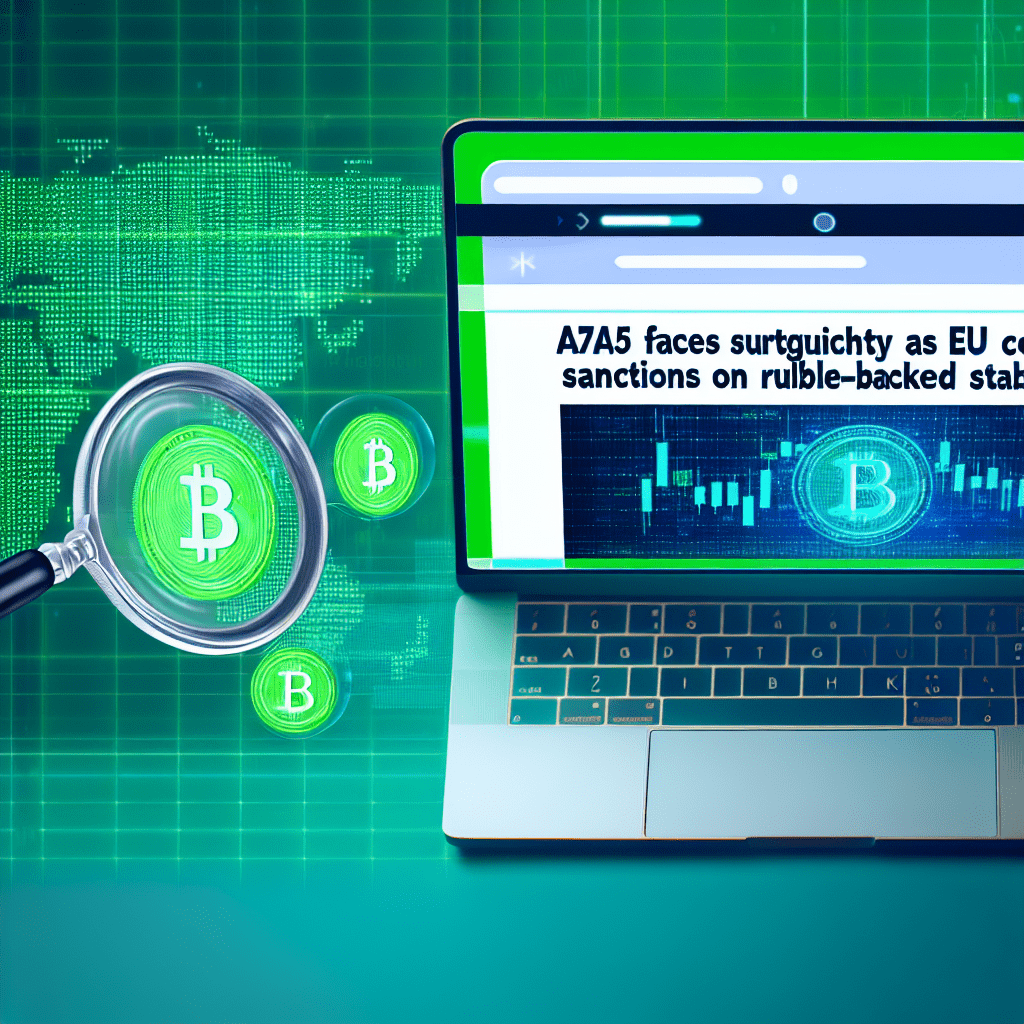The European Union is reportedly weighing sanctions against A7A5, a stablecoin backed by the Russian ruble, which is the largest non-US-dollar pegged stablecoin worldwide.
These sanctions would prevent EU-based organizations and individuals from engaging directly or indirectly with the token through third parties, according to a report from Bloomberg published on Monday, referencing documents related to the proposal.
Several banks located in Russia, Belarus, and Central Asia are also facing scrutiny for allegedly enabling sanctioned entities to execute crypto-related transactions, as reported by Bloomberg.
This marks the EU’s latest initiative to disrupt Russian crypto transactions, following the sanctions imposed on September 19 that blocked all transactions for Russian residents and restricted dealings with foreign banks affiliated with the country’s sector.
Cryptocurrency represents just one of the various tactics Russia has employed to circumvent Western sanctions.
In addition, Russia has been utilizing what is known as a shadow fleet, a multitude of vessels used for smuggling sanctioned goods, obscuring the origins of its oil, and conducting intermediary trading through third-party countries, among several other strategies, according to the global risk consultancy firm, Integrity Risk International.
Simultaneously, Russia is engaging in illegal gold trades to launder money, as indicated by a report from global policy think tank Rand published in December 2024.
A7A5’s market cap spiked after sanctions
A week after the EU’s sanctions against crypto platforms were announced on September 19, A7A5’s market capitalization surged on September 26 from roughly $140 million to over $491 million, marking a 250% increase in just one day, according to CoinMarketCap.
A7A5’s market capitalization is currently stable at around $500 million as of Monday, which represents approximately 43% of the total $1.2 billion market cap for non-US dollar stablecoins. Circle’s euro-pegged EURC is the second-largest, with its market capitalization sitting at around $255 million.
EU sanctions necessitate the approval of all 27 member states before they can be enacted, and modifications could still occur prior to implementation, according to Bloomberg.
The European Council describes sanctions as a tool aimed at those responsible for the policies or actions the EU seeks to influence, serving as a means to “bring about change in the policy or conduct of those concerned, with the objective of promoting the goals of the EU’s Common Foreign and Security Policy.”
EU joins US and UK with sanctions
The EU’s sanctions came in response to similar restrictions enacted by the United Kingdom and the US in August, which targeted sections of the financial sector allegedly utilized by Russia to circumvent Western sanctions, including Central Asia’s Capital Bank and its director, Kantemir Chalbayev.
Related: Putin adviser claims US using stablecoins, gold to devalue its $37T debt
Blacklisted entities also included Kyrgyzstan crypto exchanges Grinex and Meer, along with organizations associated with the infrastructure supporting the ruble-backed stablecoin.
A7A5 was launched in February on the Ethereum and Tron networks by Moldovan banker Ilan Shor and Russia’s state-owned lender Promsvyazbank. It was marketed as a “token backed by a diversified portfolio of fiat deposits held in reliable banks within Kyrgyzstan’s network.”
Despite the sanctions and a ban in Singapore, the company behind A7A5 made an appearance at Token2049, where it set up a booth. Executive Oleg Ogienko also addressed the audience on stage.
However, the project was later removed from the event and website by the organizers.
Magazine: The one thing these 6 global crypto hubs all have in common…

